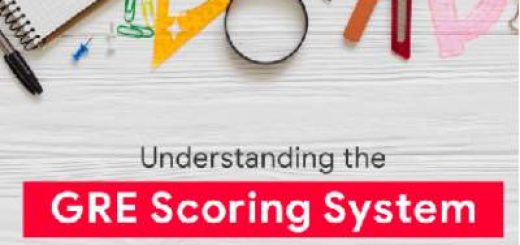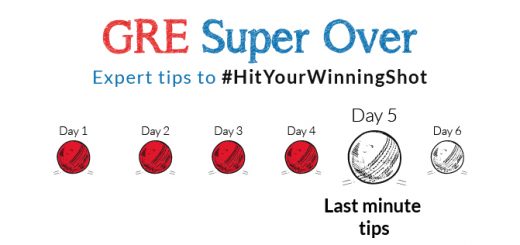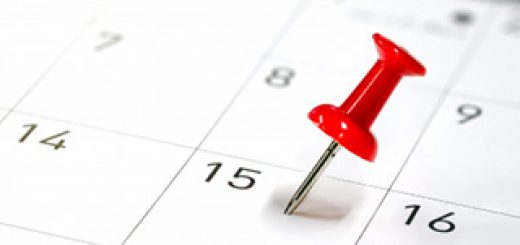Strategies to Master GRE Math – Permutation and Combination
Do you find yourself struggling with the Quant section?
Are you intimidated by Permutations and Combinations questions in GRE Math?
Do you scratch your head every time you are solving a question on P&C?
Well, you aren’t the only one! Don’t worry, most students who prepare for the GRE are stumped by questions on Permutations and Combinations. However, P&C is an integral chapter of GRE Math.
Gaining your mastery in this topic is a decisive aspect if you wish to achieve that dream score of 170!
Download our eBOOK on “Quant handbook for a perfect 170 score“
Why Is Permutation and Combination Important in GRE Math?
GRE Math measures your competency in four primary areas: arithmetic, algebra, geometry, and data analysis. Permutation and Combination is one concept falling under the data analysis section. But P&C is just a small part of data analysis – you will typically get only a few questions on it.
Now, we know what you are wondering: ‘Why must I focus on Permutation and Combination if it forms such an insignificant part of my GRE Math?’
Well, the answer is simple: It’s to differentiate the great from the good! If you are aiming for a high score in the Quantitative section, and have already mastered the rest of the topics such as algebra, arithmetic, and geometry; then a few questions can make a world of difference to your scores. And not just for your scores, the same few questions could make a difference between an admit into an elite institute as opposed to an admit into a mid-tier university.
It is therefore important that you familiarize yourself with the basics of Permutation and Combination, thereby raising your chances for a higher and a better GRE Quant score. And, we are here to help you do exactly that!
So, let’s begin with the basics. Permutations and Combinations are the bane of many students. But do you know the difference between permutation and combination? No? Don’t worry, you’re not alone.
What Are Permutations and Combinations?
As mentioned earlier, most students aren’t aware of the difference between the two concepts. While the difference is small, being aware of it will lead to accurately applying the correct formula at the correct junction.
Permutations: Let’s begin with Permutations. One way to think of this concept is as the number of arrangements or orderings within a fixed group.
For instance, if I have five students and wish to figure out in how many ways they can sit on five different chairs, I will have to use the permutations formula. This is because the number in the group is fixed. Secondly, we have to examine the number of ways in which we can “arrange” the students on the five chairs.
Combinations: On the other hand, the combination formula is useful when figuring out how many groups can be formed from a larger pool of people. For example, if a teacher wanted to know how many distinct groups she can form from all the people in the class, she would use combinations. The imperative word here is “distinct,” as one student can’t be in two groups at once.
To simplify:
Here is one worked out example of each kind to help you understand better.
1) In how many different ways can we award the 1st, 2nd, and 3rd place prizes among eight contestants? (Gold / Silver / Bronze)
In this question, we have to arrange 8 people in a sequence. We will use the permutations formula here since the order is important in solving this problem.
Here is how it would work out:
- For the first place spot, we have 8 people to choose from: A B C D E F G H
- As we go down the list, the number of people we have to choose from will decrease by one each time.
- Therefore, silver medal will have 7 choices: B C D E F G H. [B wins the silver]
- Bronze medal – 6 choices: C D E F G H. [C wins the bronze]
- Here you see that we picked specific people to win. We had 8 choices at first, then 7, then 6. The total number of options was 8 × 7 × 6 = 336
- But we don’t have to do 8, since we have to order only 3 out of 8 people.
Because 5 people were left after we picked 3 medals, the final formula is:
 [which translates to]
[which translates to] 
Now, consider this question:
2) Steven draws 13 portraits for his art project. He wants to choose 8 of them for his studio art final. How many different groups of photos are possible?
If you observe carefully, this question asks about ‘groups’ and not the order in which the portraits will be chosen. Therefore, using the formula,
= 13!8! 13-8!
= 1287 different groups
Pro Tip: Always remember to ask yourself whether the order matters in the question. Be mindful while solving P&C questions, as the GRE may also combine one or more of these concepts into the same problem!
- Addition Rule: If an experiment can be performed in ‘n’ ways, and another experiment can be performed in ‘m’ ways, then either of the two experiments can be performed in (m + n) ways.
- Multiplication Rule: If an operation can be done in ‘m’ ways, while another operation can be done in ‘n’ ways, then both of the operations can be performed in m × n ways.
Take a GRE style practice quiz on Permutations & Combinations now!
Tips to Master Permutation and Combination Questions in GRE Math
To be able to ace your GRE math, you have to be at the top of your game all the time! While this may seem daunting at first, with the right techniques and appropriate guidance, you will be surprised at how easily you can achieve a perfect score of 170 in Quant. But blind hard work isn’t enough; in fact, with an exam such as the GRE, working smarter rather than harder is the key!
To help you reach your dream score, we have compiled a list of some of the best tips and tricks you can use to ace your Quant section, especially when it comes to the dreaded P&C! Here they go…
1) Confirm That the Question Is Actually on P&C
First and foremost, it is imperative to understand whether the question itself requires you to use the concepts of Permutations and Combinations. In GRE Math, questions don’t come according to chapters or labels as is the case with your practice books. Rather, they are a concoction of different topics and concepts thrown together in a blender mix of a section! You can have a P&C question sandwiched between an arithmetic and geometry question. It is therefore important to determine whether the problem involves permutations and combinations or not, and not keep a one-dimensional mind.
One simple way to be alert to this is to, of course, look out for the word ‘probability’ in the question statement. However, they usually won’t be so straightforward. Thus, if you cannot find the word ‘probability’ embedded in the question, then keep an eye out for other important markers and related keywords. All of these imply the use of Permutations and Combinations.
Some of these could be:
- Event
- Outcome
- Random Selection
- Chance
2) Memorize the Formulas
The key to acing your Quant section – not just Permutations and Combinations – is memorizing your formulas. Not only is it a healthy habit, but also saves up on crucial time (remember, you only get 2 minutes per question – you can’t waste any precious seconds on recalling formulas!
According to our data, most of our top scorers actually spend more time learning the formulas and concepts rather than practicing the sums! We’ve listed some of the important formulas you can learn and keep in handy:
- The probability of an event = Favorable Number of Events Number of Total Outcomes
- Odds in favor of an event = Number of Favorable Outcomes Number of Total Outcomes
- Odds against an event = Number of Unfavorable outcomes Number of Total Outcomes
3) Pay Attention to the Language
GRE Math in your exam is as much a measure of your analytical abilities as it is about your cognitive prowess. To ace this exam, you have to always be on your toes. The test-makers don’t only want to see whether you can robotically apply formulas; rather they want to investigate whether you can comprehend what is asked of you and suitably apply your brains.
Thus, they create challenging problems by using subtle language to indicate whether you should use a combination formula, a permutation formula, or perhaps both sometimes, to answer the question on hand.
Keep in mind, combination-based questions will indicate that you need to form groups or sets, whereas permutation questions will hint towards finding an order. Words and phrases such as ‘first’, ‘second’, or ‘third’; or ‘how many different ways’ are usually indicators of permutations.
4) Practice, Practice, and more Practice!
One should always pay heed to old adages, for they hold the most wisdom. And it doesn’t get much better that, “practice makes perfect”. There is a reason this has reverberated through history; it’s because it’s true. There is no shortcut to success. The more of these problems you solve, the more you will familiarize yourself with them. By practicing more, even if you get them wrong, you will be acquainting yourself with the style of words, the diction, the way the questions are posed, and the format in which they will be presented to you.
Our data reveals that more often than not, the difficulty bar of questions on P&C is usually set at medium to high. So, make sure that you practice GRE questions which are a little tough. You must practice advanced GRE questions of level 4 and level 5 to be able to tackle the question on your D-Day head on!
Moreover, you will also be reading the corresponding explanations along with the answers, which will further help you understand the concepts of P&C better. The better prepared you are to ace Permutation and Combination questions, the higher your chances of acing your GRE Math!
Special Pointers to Follow On the D-Day
We have also put together a list of some special pointers for you to follow right before you Big Day! Consider this as a practical ‘last minute’ tips list. Read it right before you walk into your exam – and walk out with flying colors!
- Firstly, and most importantly, sleep. And sleep well. Nothing ruins your chances of getting a good score as much as a tired mind. Research has repeatedly shown the importance of a good night’s sleep before and exam. Not only does it refresh you and recharge your batteries, psychologists also say that it helps consolidate and retain memorized information better.
- Stay calm, composed and as the famous book Hitchhiker’s Guide to the Galaxy states: Don’t Panic! Nothing shuts down your neuro-receptors faster than anxiety. If you feel stuck or are unable to solve a question, move on. Circle back to it later.
- In relation to the above point, if you still feel like you don’t know the answer to the question; then as a last resort make an educated guess (And hope Lady Luck smiles on you). After all, you miss 100% of the chances you don’t take.
- Go fully prepared with your stationary in place. Dress well, and eat something filling. Feeling prepared and ready is crucial! Researchers have regularly found correlations between mentally ‘feeling ready’ and associated better performance on cognitive tasks.
- Punctuality is key! The GRE is stressful as it is, so do yourself a favor and reach your test center on time. Worrying about being tardy will only disrupt your mental peace.
- When it comes to P&C, remember:
a) Re-ordering letters of a word, tossing of coins, rolling dice, and pack of cards all come under permutations.
b) Combinations are when you are asked to compute probabilities for independent events that occur together, and mutually-exclusive events.
We hope this article provided you with smart ways to crack Permutation and Combination questions in GRE Math. If you wish to take a GRE style practice quiz on this topic, you can do so here.
All the best!












